FROG EYED GECKO BREEDING AND CARE
(Teratoscincus) Difficulty: Intermediate
INTRODUCTION
Giant Frog Eyed Geckos or more specifically referred to as Wonder Geckos (under the genus Teratoscincus) are 6-8” long, this uncommon species of dry, arid desert geckos are endemic to parts of Asia and United Arab Emirates (UAE) which includes the west side of the Persian Gulf/Gulf of Oman, Iran, Central Asia, and westernmost East Asia. They are excellent at digging and burrowing and will spend much of its day hidden within their burrows.
This Genus of gecko has nine recognised species however the most common found in the pet trade are the following:
Teratoscincus keyserlingii
Teratoscincus roborowskii
Teratoscincus scincus
These geckos have a blunt head, large eyes, and a robust body, they can be characterized by their scales that resemble that of a fish. Like most other geckos, they do not have eyelids, they also do not have sticky feet these geckos are equipped with fringed comb-like scales which are adapted for loose sandy conditions. Adults are buff or yellowish-brown with black broken stripes or irregular dark spotting. The belly/underside is white. Newly hatched juveniles may be more vividly colored, being bright yellow with dark bands or stripes.
Teratoscincus is nocturnal and digs itself a deep burrow in which it is able to keep cool and hydrated during the day. Burrows provide shelter from predators and extreme temperatures, they are also incredibly effective in humidity retention which is vital for these geckos that primarily hydrate themselves by absorbing the moisture in the air.
If provoked, Teratoscincus adopts a threatening pose, standing on tiptoe, arching its back, expanding its throat, gaping open its mouth and lashing its tail. Further provocation may result in it squeaking as it rushes forward to bite its assailant. It can also drop its tail OR slough their skin to escape as a defensive strategy. They may also make a sound from the large overlapping scales on the tail similar to some species of snake vibrating their tails in leaves or on the ground.
HOUSING
There are many popular housing options for terrestrial geckos, we recommend a 36”L x 18”W x 18”H enclosure. It is worth noting that while Teratoscincus is nocturnal they are naturally curious once the lights go out and enjoy exploring their surroundings, therefore opting for a larger enclosure can be beneficial for further enrichment. Juveniles should be kept in smaller enclosures [15qt modified shoe boxes, 20”Lx10”Wx12”H or 10 gallon tank] until they are ready to be upgraded to a larger enclosure. Upgrading too soon can cause issues like stress or leave the animal unable to find its source of food.
“Can You Keep Two Frog Eyed Geckos Together?”
While these geckos can be territorial, and may fight and injure each other they can do well in Male/Female pairings, however regular monitoring should be done by an experienced keeper to reduce the risk of serious injury. Males should NOT be housed together in any situation, Frog Eyed Gecko’s are commonly found to be brutal in territorial fights in any instance where two males are together they will kill the other.
Quarantining your new gecko
It’s best to quarantine your new reptile of any species, whether or not your pet is wild-caught or captive bred, quarantine is still important. Quarantine a place in which an animal is isolated and under sterile conditions in order to reduce the potential spread of disease, this is especially important if you have a collection with many reptiles.
Even if you don’t have other reptiles that could potentially get infected by anything the gecko might be carrying, maintaining quarantine conditions for the first 3 months or 90 days will allow you to better monitor your new pet for any concerning symptoms and treat them as soon as possible. While you can do this with the same enclosure that you plan to keep the gecko in long-term, we suggest you do this with a modified tub or additional temporary enclosure.
Some rules for successful Frog Eyed Gecko quarantine:
Keep the gecko in a separate room from other reptiles.
Do not use the same equipment for the new addition as for your other reptiles.
Fully disinfect the enclosure weekly.
Wear proper PPE (Washed hands and sterile gloves each time you handle the gecko)
Get the gecko checked by an experienced reptile veterinarian and treated for parasites if necessary.
Replace substrate monthly with spot cleanings done DAILY
Observe for symptoms of disease or illness.
Check your lizard, its water bowl and substrate closely for mites or other parasites/hitch hikers. If you do find mites, treat them accordingly.
Teratoscincus should be completely healthy before being transferred out of quarantine to its long-term setup.
Lighting, Temperatures & Humidity
Like other reptiles, Frog Eyed Geckos are cold-blooded ectotherms, which means that they rely on external temperatures to manage their own body temperature and metabolism. A reptile’s enclosure should offer a range of temperatures to allow them to thermoregulate effectively. To ensure that your gecko is healthy and comfortable, it is important to provide them with an enclosure that offers a range of temperatures for effective thermoregulation.
We find that the enclosure should have a warm side and a well slightly less warm side, with a temperature range of 90-95°F (32-35c) for the warm side and 85-80°F (29-26c) for the cool side. The best way to achieve this is using a basking bulb, under tank heater (UTH)/heat pad or ceramic heat emitter, and any heat source will need to be attached to the relevant thermostat to prevent overheating. Monitor your temperatures with an accurate digital thermometer to establish whether your system is working effectively. Allowing for escape from the heat so your gecko can regulate properly. During the night, heating may not be required, as temperatures can fall to around 59f (15C) - which will mimic a drop in temperature that would be experienced in a natural setting.
“Do Frog Eyed Geckos Need UVB”
Frog-eyed geckos are not a full time basking species by nature so they don't need an intense UVB source we recommend that despite being nocturnal - providing UVB for them if possible. This lighting helps provide a clear day/night cycle, provides all of the vitamin D that your pet needs, strengthens the immune system, facilitates better digestion, and other benefits. It is important to provide UVB in a good quality strip bulb. UVB will still get to your gecko even while they are hiding away as it bounces off surfaces in the tank. Arcadia 7% Shade Dweller, or 6% T5 are good examples of relevant bulbs - though the strength required will depend on the height of your enclosure.
This UV will be used in a 12-hour cycle, being switched off as the temperature drops to create day and night periods. All UV bulbs will also have a lifespan between 6 - 12 months - which will need to be noted as after this time the UV will no longer be effective even if the bulb still glows. Lifespan is also bulb and brand dependent. For best results, house the UVB bulbs in a reflective fixture. Position the lamp on the same side of the terrarium as the heat lamp, 12-14” above the basking area. click this link to find out how to measure UVI
“How Humid Does My Enclosure Need To Be?”
High humidity is not required of this species and you will most likely not need to intervene to reach the required 40% - 50%. It is important to provide a water dish, placed on the cooler end of the vivarium to ensure evaporation is minimal. Dishes will need to be cleaned regularly to prevent bacteria build-up which can lead to illness in your gecko. Regular tap water is fine to use.
Misting is also the best way to make sure your gecko stays hydrated, as while they will drink out of a dish occasionally, this species prefers to absorb moisture from the air or lick droplets off the plants, wood and the enclosure walls. Don’t reduce the amount of air flow in your enclosure as an effort to increase humidity levels. Ventilation is key to helping your gecko stay healthy, and reducing air flow increases pathogen concentration and the growth of mold. Reducing air flow can cause a number of problems for your gecko such as:
Skin Infections
Respiratory Infections
Substrate
Since Frog Eyed Geckos are primarily a burrowing species it is important to provide them with a substrate that can hold form and is deep enough to do so, it must also retain moisture well to promote proper hydration along with allowing your gecko to shed properly. You may have heard the idea that using loose substrate as bedding for your gecko can potentially cause impaction, which is a blockage in the intestine that can disrupt proper digestion. While there is validity to this concern, particularly with substrates like calcium-based sand, there are alternative naturalistic options that are safer. These substrates not only offer enrichment but also enhance the overall aesthetic of your gecko's enclosure.
When using a loose substrate, it is important to choose the right type and frequently monitor the temperature and humidity in the enclosure. Here is how we personally prepare substrate and what we recommend:
We suggest using a pretty even mixture of 50% organic topsoil, 50% play sand. Alternatively you can do a mixture of 40% organic topsoil, 40% play sand and 20% excavator clay.
Layer the substrate 6-8″ thick this will promote proper humidity retention. Substrate should be spot cleaned daily and completely replaced every 3-4 months to remove feces, urates and other contaminants. When it's time to change your crested gecko's substrate, it's a good opportunity to thoroughly clean the entire enclosure. Follow these general steps:
Place your gecko in a secure temporary container
Take out all substrate and decorations and place them in a bucket of warm water and blue dawn dish soap to soak
Use a vacuum and wipe down the enclosure to remove any remaining substrate
Apply a reptile-safe disinfectant to the floor and walls of the enclosure
Add new substrate to a secondary bucket and mix with the recommended ratio of water, substrate should not be overly wet.
Add new substrate to the enclosure
Reset the décor
Introduce your gecko back into the clean setup.
“What About Bio-Active Enclosures”
Esentially Frog Eyed Gecko enclosures SHOULD somewhat be bioactive the difference is whether or not you add the self-sustaining “clean up crew” (isopods and springtails). A bioactive enclosure is designed to mimic a natural environment and includes live plants, beneficial microorganisms, and a self-sustaining ecosystem with the goal of providing a more enriching and stimulating environment for the animal.
For Frog Eyed Geckos, a bioactive setup provides benefits such as improved mental and physical health, better humidity regulation, and a more natural and engaging habitat. However, it's important to ensure that the plants and other components of the bioactive setup are safe for crested geckos and that the enclosure is properly maintained to keep the ecosystem balanced.
While bioactive enclosures can offer many benefits for crested geckos, there are also some potential drawbacks to consider:
Initial Setup Cost: Creating a bioactive enclosure can be more expensive upfront compared to a traditional setup. You'll need to invest in live plants, substrate, cleanup crew organisms (like springtails and isopods), and possibly specialized lighting or equipment.
Complexity: Maintaining a bioactive enclosure can be more complex than a traditional setup. You'll need to monitor and manage the ecosystem, which includes ensuring the plants thrive, managing the cleanup crew population, and maintaining the overall balance of the environment.
Risk of Plant Toxicity: Some plants used in bioactive enclosures may be toxic to crested geckos if ingested. It's important to carefully research and select safe plants for the enclosure.
Potential Pest Issues: There's a possibility that unwanted pests or insects could become established in the enclosure, particularly if the cleanup crew population is not properly managed.
Ultimately, whether a bioactive enclosure is the right choice for your gecko depends on your preferences, level of experience, and willingness to invest time and resources into creating and maintaining a thriving ecosystem. If you're unsure, you may want to start with a “traditional setup” and gradually transition to a bioactive enclosure if you feel comfortable doing so. Check out this video on setting up a Bio-Active enclosure (yes it’s for beetles but the same concept applies).
Live plant options for Frog Eyed Geckos
Although Frog Eyed Geckos are insectivorous and highly unlikely to nibble on the plants in their enclosure, their CUC or feeder insects might. This means that you still need to be careful in selecting nontoxic plants. Here are some plants that are robust and do well in a well-lit, low-moisture environment:
Aloe
Christmas cactus
Echeveria
Elephant feed
Festuca grass
Gasteria
Haworthia
Iceplant
Jade plant
Mother of pearl plant
Opuntia (spineless variety)
Sempervivum
Decorating the enclosure
With that being said when it comes to live plant options for your Frog Eyed Gecko, lets talk about other décor your gecko can utilize. Providing multiple hides or ledges/”caves” for your Frog Eyed Gecko to create burrows under can greatly improve its quality of life by keeping it stimulated and engaged. Since Frog Eyed Geckos are terrestrial geckos designing their enclosures can be a ton of fun! We have a couple guidelines to follow as you decorate your geckos tank:
climbing rocks or flat slate rocks
ledges
Here are some inspirational photos to give you some help in decorating your geckos enclosure:
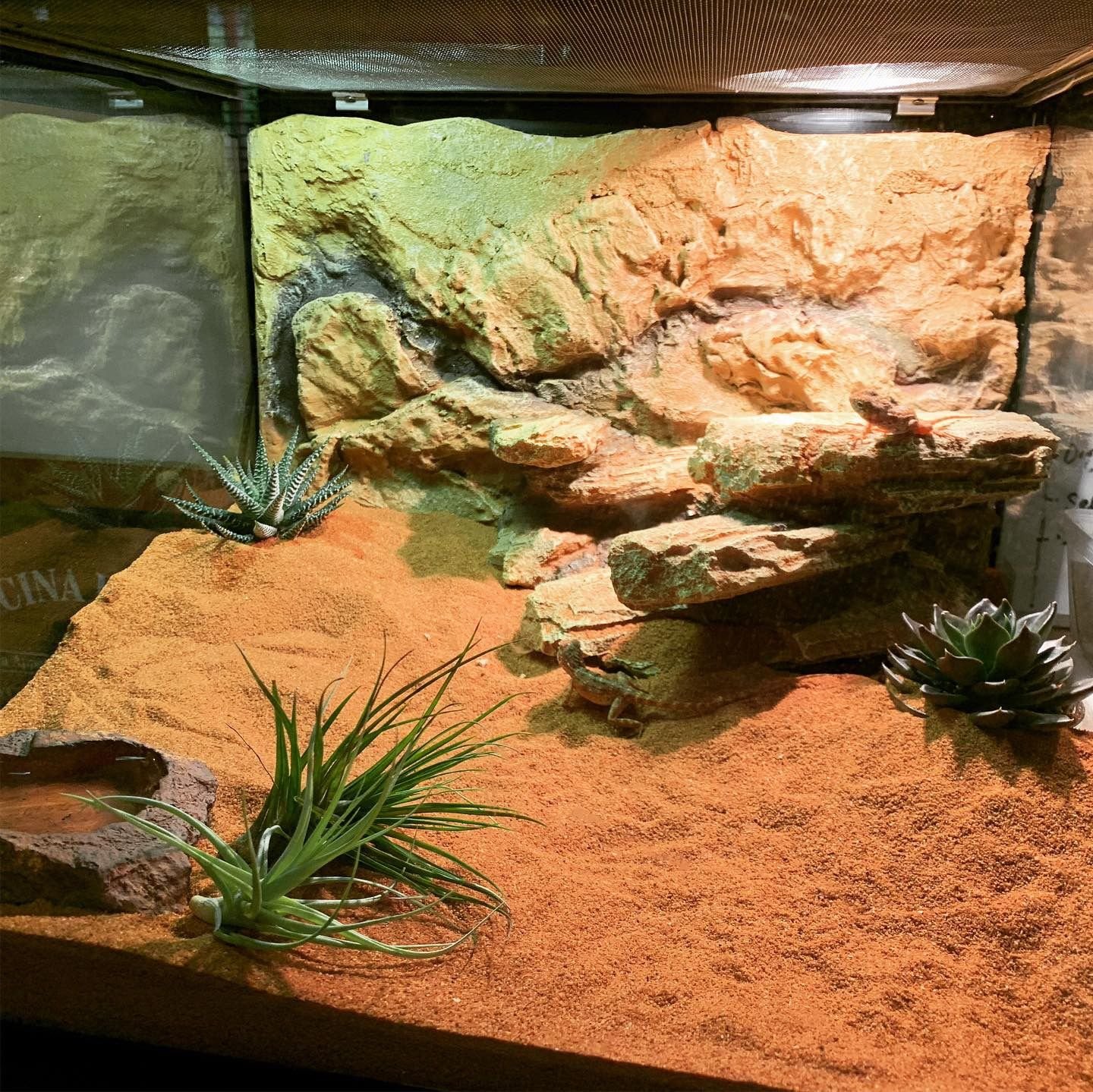
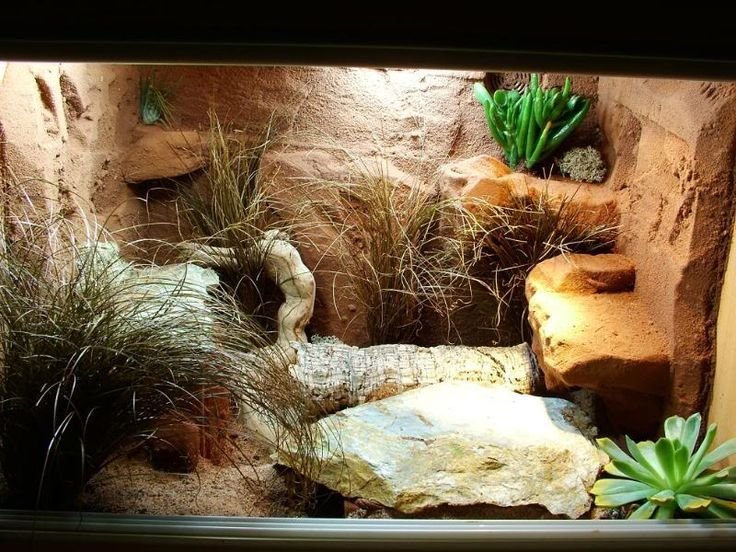
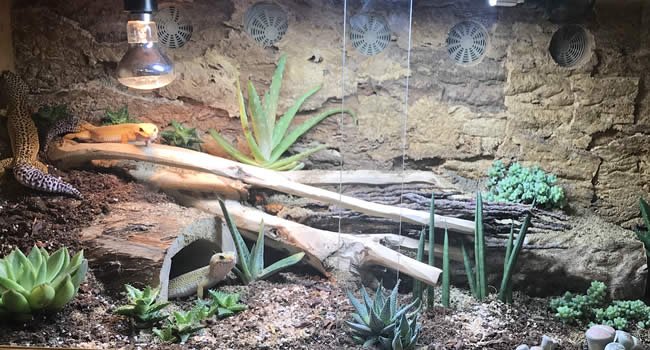
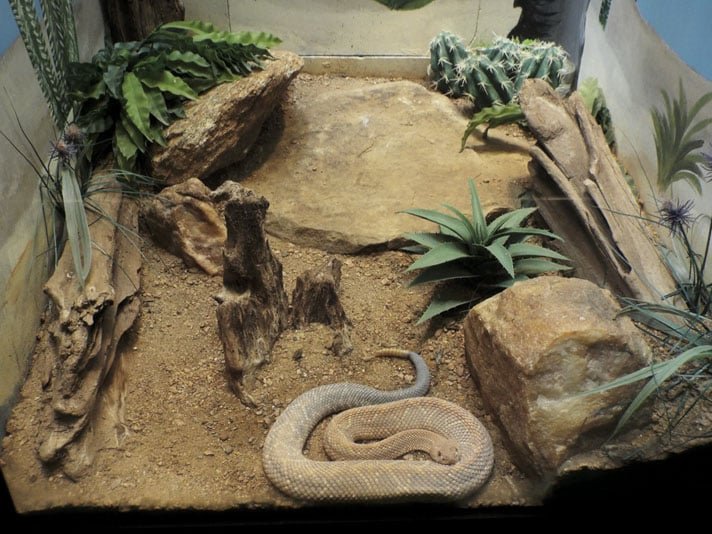
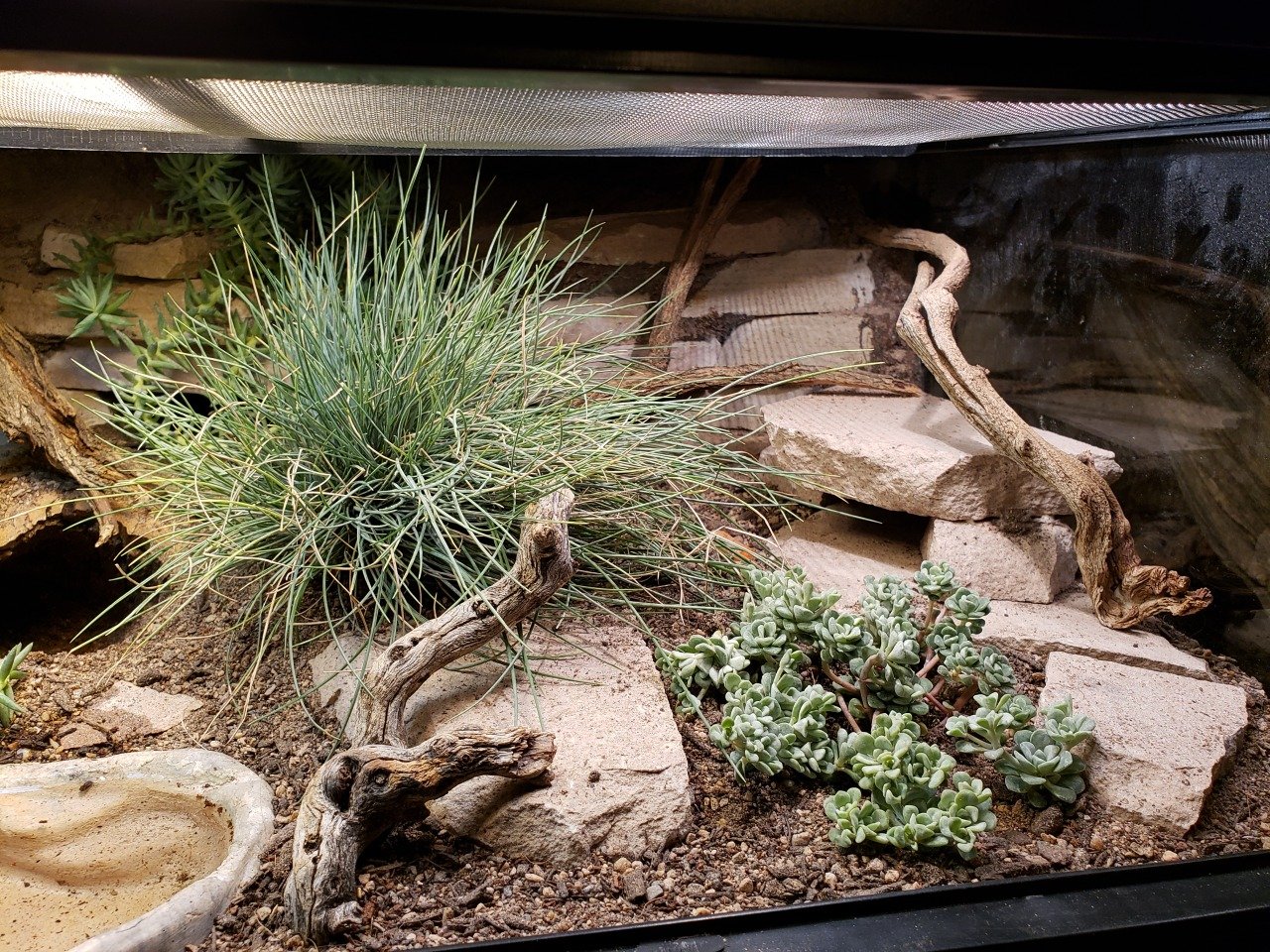
Feeding
Frog Eyed Geckos are insectivores, which means that they need to eat a variety of insects to get the right nutrition. Juvenile Frog Eyed Geckos should be fed every day, young adults should be fed every 2-3 days, and adults should be fed every 3-5 days depending on body condition.
Offer 3-5 insects per gecko (if kept in pairs), or however much they will eat in 15 minutes
“What Are The Best Feeder Insects For Frog Eyed Geckos?”
Here are some good options likely to spark your gecko’s interest. Using a rotation of at least three different kinds of feeders to meet your gecko’s nutrition needs can be great for enrichment but is not necessary:
Feeder insects should be gutloaded for 24-48 hours prior to being offered to your gecko in order to maximize their nutritional content. For best results use the following in your insect salad (yum)
Carrots
Kale
Sweet Potatoes
Mazuri Tortoise Diet [Pellets]
You will also need a calcium supplement. We recommend Repashy Supercal NoD or Arcadia EarthPro CalciumPro Mg, lightly dusted on all feeder insects. Calcium powder and reptile vitamins should not be used together but instead rotated per feeding.
Handling
Frog Eyed Geckos are NOT fans of regular handling as their scales can be somewhat fragile and thus require some work to make them tolerant of it as well as being mindful to not rip their scales. Handling a these geckos should only be done when necessary, but it's important to do so with care and consideration for the well-being of the gecko. Here are some tips and information on handling Frog Eyed Geckos:
Do not Squeeze the gecko.
Start with short handling sessions at first, then gradually make them longer.
Put the gecko back in its enclosure only when it’s calm.
Frequency of Handling:
Frog Eyed Geckos are generally a docile and handleable species, but they can become stressed if handled too frequently. It's recommended to limit handling to only When absolutely necessary, especially for young or newly acquired geckos.
Gentle Approach:
When you pick up a Frog Eyed Gecko, do so gently and avoid sudden movements. Use a slow and deliberate approach to prevent startling or stressing the gecko. Don’t grab the gecko from above. Instead, scoop from below starting under the chin and sliding your hand/fingers under its chest. NEVER squeeze the sides they have delicate bones and organs, and excessive pressure can cause harm.
Supportive Handling:
Always support the gecko's body properly, support its entire body and all four feet.
Watch for Signs of Stress:
Pay attention to your gecko's body language. If it shows signs of stress, such as vocalizations, hissing, or attempts to flee, it's best to put it back in its enclosure.
Start with Short Sessions:
Especially if your gecko is not used to being handled, start with short handling sessions and gradually increase the duration as the gecko becomes more comfortable.
Handle In A Secure Container Or Enclosure:
Frog Eyed Geckos are super fast if they decide to run.
BONUS: No Car Rides
Unless medically emergent or otherwise moving with your pet, car rides are incredibly stressful on your animal.
Remember, every gecko is an individual, and their comfort level with handling may vary - when stressed a Frog Eyed Gecko are super fast if they decide to run. Generally, these are a type of gecko that is best enjoyed by viewing only.
BREEDING
Now that we have the basic care guidelines for Teratoscincus care lets dive into breeding. Before you go ahead and get a pair of geckos understand these geckos are difficult to work with in terms of reproduction and require pretty specific environmental manipulations to successfully encourage breeding behavior.
Breeding Basics
When it comes to properly breeding your geckos there’s a few things to keep in mind:
Females should be 40-45 grams in weight
Males should be 35-40 grams in weight
Frog Eyed Geckos experience a breeding season around the beginning of the year when ambient temperatures are rising. It is imperative that females get plenty of calcium so that properly calcified eggs are being laid and to avoid calcium deficiencies and “crashing” in your breeding female. When attempting to pair you want to ensure your temperatures are correct (90-95f) and that you’re providing slightly elevated humidity levels every 2-ish weeks (60%) we have found that it best simulates the season and encourages male breeding behavior.
Females generally lay within the loose substrate but you can provide a “lay box” with loose sand. Females produce about four clutches a year each clutch consisting of 2 eggs (8 eggs total.. approximately), these eggs are hard shelled. With that being said its important you know how to properly incubate these eggs. Unlike soft shell laying geckos such as Crested Geckos or Leopard Geckos, these eggs are extremely fragile and can crack if not handled properly. Here is some basic information to incubation:
Relatively low humidity – 40-55% required. Higher temperatures can kill embryos.
Incubation temperature: 80-90ºF (25-30ºC).
The eggs hatch in 70-100 days.
The following are some guidelines to setting up your egg box and properly situating your eggs:
In the case you are using a SIM container
Take Pangea hatch or Perlite substrate and soak it in a separate container and strain so that it is not dripping but adequately wet, transfer a layer of 1-3 inches on the bottom of SIM container and place incubation tray on top. Eggs should be situated and secure on the tray, eggs must stay DRY as to not kill the embryo or spoil the egg. Ensure the eggs are placed in which they were found.
In the case you are using a 6qt sterilite bin, Jewelry sort container/Tackle box or Deli Cup
Take your container and line the bottom with Pangea hatch or Perlite substrate soak it in a separate container and strain so that it is not dripping but adequately wet, transfer a layer of 1-3 inches on the bottom of container (in each compartment if in sort container/tackle box). Take an adequately sized bottle cap and put DRY incubation substrate inside, place the bottle cap on the moist substrate and then place the egg in which you found it. BE SURE THE LID OF THE INCUBATION BOX DOES NOT CRUSH THE EGG
Hatchling Care
Until hatchling Frog Eyed Geckos reach a weight of 10-15 grams, they are best raised alone in a simple shoebox setup measuring 12 inches long, 6 inches wide and 4 inches tall. This cage is ideal because it offers close proximity to water, food, heat and shelter. A continuous temperature of 90 degrees under the hide box is optimum for juveniles. The cool end should be the same as the adult’s requirement: 73 degrees. Paper towels or play sand can serve as the floor covering, be sure to provide the same décor you would an adult but on a smaller scale.
Hatchling Frog Eyed Geckos shed their skin and begin eating after the first three days of their lives. Regular 1-inch-long mealworms are the best offering for baby geckos at this time. Place five to 10 mealworms in a jar lid every other day.
Resources
This care sheet is based off of personal interaction and trial and error, Frog Eyed Geckos are a wildly uncommon group of animals in the trade and we continue to learn about them as we develop new ideas and research native biomes and behaviors you can find some more information via wikis attached below:
